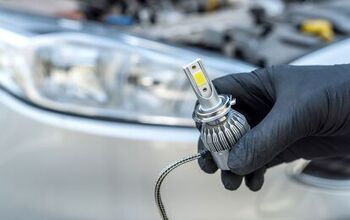Metal vs Synthetic Winch Line

A winch stands is an indispensable tool for off-roading. It serves a multitude of purposes in various work scenarios, too, but gains our appreciation for the ability to extract a stuck vehicle. While the process of selecting an appropriate winch is already a challenging endeavor, the decision about the type of line to use adds another layer of complexity. The traditional steel cable, a tried-and-true option, is contrasted with the modern synthetic line, each presenting distinct advantages and drawbacks. In this exploration, we delve into the pros and cons of both, shedding light on the considerations that users should weigh when making this crucial decision.
Steel cable, often regarded as the stalwart in winching, boasts a composition that aligns with its name, utilizing braided-steel lines to create an exceptionally durable and abrasion-resistant pulling cable. The strength of steel cables varies widely, with most rated to withstand forces ranging from 7,500 to 10,000 pounds, though care must be paid to not select a lighter-rated cable as it could prove dangerous. It is essential to note that the winch line should always have a breaking strength higher than that of the winch itself, as a snapped cable can pose a significantly greater risk than a burnt-out winch motor.
According to insights from Warn Strategic Communications Manager Andy Lilienthal, the durability of steel cable makes it an excellent choice for heavy-duty work applications. Resilient to continuous abuse, steel cables can handle demanding tasks and utility duties with ease, making them ideal for tasks such as moving trees and rocks. However, caution must be exercised when using a winch with a steel line to prevent binding or twisting, which could compromise the line's integrity and increase the risk of failure. Additionally, users are advised to wear heavy-duty gloves as steel lines tend to develop sharp metal burrs that can cause injuries. Regular maintenance is crucial, with attention to signs of wear, and the importance of keeping the steel winch line clean to prevent rust buildup when exposed to dirt, sand, and moisture is paramount.
The pros of steel cable include its durability and abrasion resistance, making it a robust and reliable choice. Furthermore, it is generally less expensive than synthetic line, which is appealing to those mindful of budget constraints. However, the cons should not be overlooked. Steel cables can develop burrs and spikes, posing safety risks, and are heavier than their synthetic counterparts. Additionally, they require more maintenance, making them less convenient for users who may prefer a lower-maintenance option.
In essence, steel cable remains a reliable option, provided users are familiar with and mitigate its potential drawbacks. Its resilience and strength make it suitable for demanding tasks, offering a tried-and-tested solution for those who prioritize durability and cost-effectiveness.
On the other hand, synthetic winch lines have undergone remarkable advancements over the last decade, emerging as a compelling alternative for a wide range of applications. Composed of engineered materials, the composition varies among manufacturers but generally includes a blend of metal and plastic fibers like polyethylene. One significant advantage of synthetic lines is their weight, being lighter than steel cables. Moreover, they do not develop burrs or sharp metal splinters, addressing a common concern associated with steel cables.
Warn emphasizes that synthetic lines "don't store as much potential energy under load" compared to traditional steel lines. This characteristic reduces the risk associated with a line failure, making synthetic lines less dangerous in the event of a breakage. The absence of stored potential energy makes them a safer option, especially in situations where safety is a top priority.
The pros of synthetic lines extend beyond their weight and safety features. They are also more user-friendly, as they are easier to handle and manipulate compared to the heavier and stiffer steel cables. Additionally, synthetic lines do not corrode, eliminating the need for regular maintenance to prevent rust buildup. These features make synthetic lines an attractive option for users seeking a convenient and low-maintenance solution.
However, it is crucial to consider the cons of synthetic lines as well. While they have become more durable over time, they may still be susceptible to abrasion and cutting in certain conditions. Moreover, synthetic lines are generally more expensive than steel cables, which could be a limiting factor for users with tighter budgets.
In summary, synthetic winch lines present a modern and versatile option for users seeking a lightweight, user-friendly, and low-maintenance solution. The advancements in material technology have addressed many concerns associated with synthetic lines, making them a viable choice for various applications. However, users must weigh the higher initial cost against the benefits and consider the specific conditions in which they will be using the winch.
The choice between a steel cable and a synthetic line for a winch involves a careful evaluation of the intended use, budget considerations, and safety priorities. Steel cables, with their time-tested durability and cost-effectiveness, remain a reliable choice for those engaged in heavy-duty work. On the other hand, synthetic lines offer modern features such as lightweight construction, user-friendly handling, and reduced safety risks. Ultimately, the decision rests on the preferences and priorities of the user, with both options providing viable solutions for extracting stuck vehicles and performing various tasks with a winch.

Ross hosts The Hooniverse Podcast. He has been in the off-road world since he was a kid riding in the back of his dad’s YJ Wrangler. He works in marketing by day and in his free time contributes to Hooniverse, AutoGuide, and ATV.com, and in the past has contributed to UTV Driver, ATV Rider, and Everyday Driver. Ross drives a 2018 Lexus GX460 that is an ongoing build project featured on multiple websites and the podcast.
More by Ross Ballot




































Comments
Join the conversation